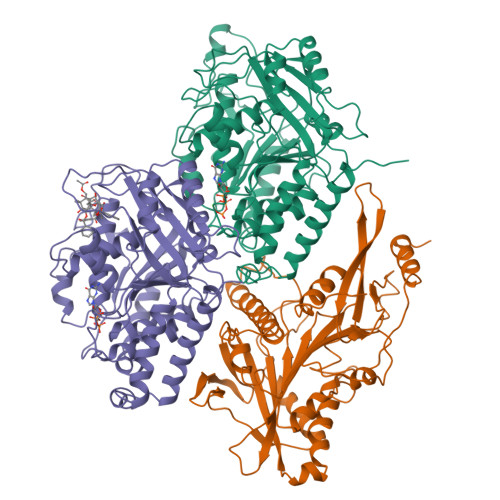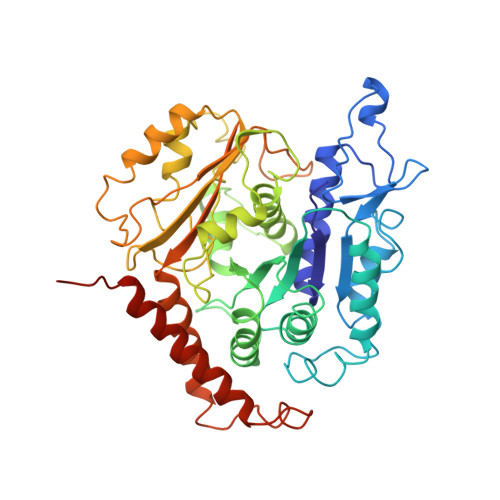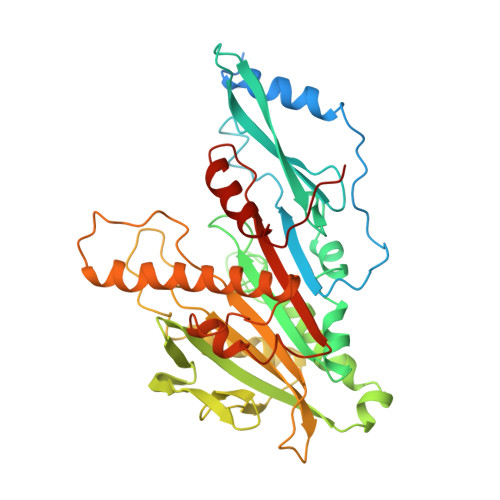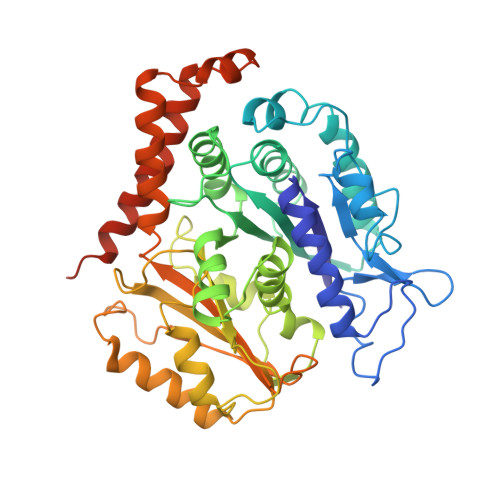Cryo-EM reveals the structural basis of microtubule depolymerization by kinesin-13s.
Benoit, M.P.M.H., Asenjo, A.B., Sosa, H.(2018) Nat Commun 9: 1662-1662
- PubMed: 29695795
- DOI: https://doi.org/10.1038/s41467-018-04044-8
- Primary Citation of Related Structures:
6B0C, 6B0I, 6B0L - PubMed Abstract:
Kinesin-13s constitute a distinct group within the kinesin superfamily of motor proteins that promote microtubule depolymerization and lack motile activity. The molecular mechanism by which kinesin-13s depolymerize microtubules and are adapted to perform a seemingly very different activity from other kinesins is still unclear. To address this issue, here we report the near atomic resolution cryo-electron microscopy (cryo-EM) structures of Drosophila melanogaster kinesin-13 KLP10A protein constructs bound to curved or straight tubulin in different nucleotide states. These structures show how nucleotide induced conformational changes near the catalytic site are coupled with movement of the kinesin-13-specific loop-2 to induce tubulin curvature leading to microtubule depolymerization. The data highlight a modular structure that allows similar kinesin core motor-domains to be used for different functions, such as motility or microtubule depolymerization.
Organizational Affiliation:
Department of Physiology and Biophysics, Albert Einstein College of Medicine, Bronx, NY, 10461, USA.






















